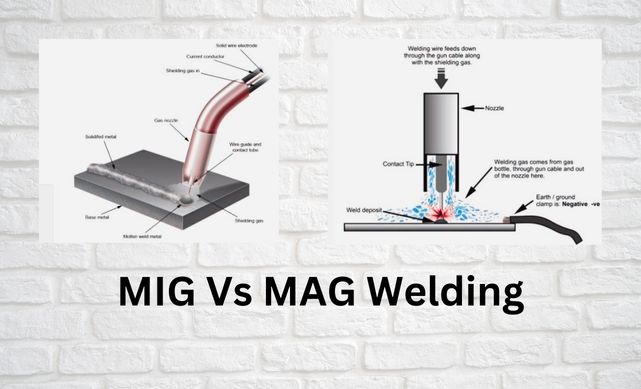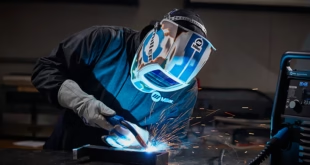Robotic MIG MAG Welding
Introduction to Robotic Welding
Robotic welding has transformed the industrial landscape, offering enhanced precision, consistency, and productivity that traditional manual methods often struggle to achieve. As technology continues to evolve, industries are rapidly adopting automated welding solutions like robotic MIG/MAG welding to streamline production and improve overall efficiency. But what exactly is robotic MIG/MAG welding, and why is it becoming so popular?
With automation taking over more tasks in the manufacturing world, robotic welding plays a crucial role in reducing human error and enhancing workplace safety. So, let’s dive deeper into this fascinating blend of robotics and welding technology and explore what makes it so essential in modern industries.

What is Robotic MIG/MAG Welding?
Robotic MIG/MAG welding combines two common welding processes—MIG (Metal Inert Gas) and MAG (Metal Active Gas)—with the precision and reliability of robotic systems.
MIG welding uses an inert shielding gas, typically argon, to protect the weld pool from contamination, while MAG welding utilizes an active gas like carbon dioxide. These processes are highly suitable for automation due to their consistent and reliable results, making them perfect candidates for robotic integration.
In contrast to manual welding, robotic MIG/MAG welding uses programmable robotic arms equipped with a welding torch. These robots can execute complex welds with impeccable accuracy, repeating the same process across multiple production cycles. This precision and speed make robotic welding ideal for industries with high production demands.
Components of a Robotic MIG/MAG Welding System
A robotic MIG/MAG welding system consists of several key components working together to deliver consistent welds. Here’s a breakdown of the essential elements:
- Welding Robot Arm: The robot arm is the heart of the system, performing the welding action with precise movements. These arms are designed for flexibility, allowing them to reach difficult welding positions.
- Power Source and Wire Feeder: The power source supplies the necessary electrical current for the welding process, while the wire feeder continuously feeds the welding wire into the arc.
- Welding Torch and Shielding Gas System: The torch directs the electrical arc to the workpiece, while the shielding gas protects the weld from atmospheric contamination.
- Sensors and Control Units: Modern robotic systems use advanced sensors and control units to monitor the welding process in real-time. These components ensure the robot maintains consistent performance and can adjust to changes in the welding environment.
How Robotic MIG/MAG Welding Works
The robotic MIG/MAG welding process follows a series of precise steps, ensuring high-quality and repeatable results. Here’s a simplified breakdown:
- Programming the Robot: The robot is programmed to perform the desired weld using specialized software. Technicians input the welding parameters, such as speed, wire feed rate, and shielding gas flow.
- Starting the Welding Process: Once programmed, the robot’s welding torch is positioned near the workpiece, and the power source initiates the welding arc. The wire feeder supplies the filler metal, while the shielding gas protects the molten weld pool.
- Executing the Weld: The robot follows its programmed path, maintaining consistent speed and wire feed rate to ensure a clean, uniform weld. Sensors continuously monitor the arc and make adjustments as needed.
- Post-Weld Inspection: After the weld is completed, the system may use sensors or cameras to inspect the weld for defects. This ensures that every weld meets the required quality standards.
Applications of Robotic MIG/MAG Welding in Industries
Robotic MIG/MAG welding is used in a variety of industries, particularly where high-volume production and precision are critical. Some of the major industries utilizing this technology include:
- Automotive Industry: Welding is a cornerstone of vehicle assembly, and robotic welding is employed to produce car frames, exhaust systems, and other critical components.
- Aerospace and Heavy Manufacturing: These industries benefit from robotic welding for complex and large-scale structures, where precision is essential to safety and performance.
- Construction and Metal Fabrication: Robotic welding systems are increasingly being used in structural steel fabrication, helping to ensure strong, durable welds in critical infrastructure projects.
Advantages of Robotic MIG/MAG Welding
There are numerous advantages to adopting robotic MIG/MAG welding in industrial applications:
- Increased Productivity and Efficiency: Robots can operate continuously, significantly increasing output and reducing downtime.
- Enhanced Weld Quality and Consistency: Robotic welding eliminates human error, producing higher-quality, more consistent welds.
- Reduced Labor Costs and Safety Risks: By automating the welding process, companies can reduce the number of welders required and minimize workplace hazards.
- Sustainability and Environmental Impact: Robotic systems optimize material usage, reducing waste and improving energy efficiency, contributing to a more sustainable production environment.
Challenges in Robotic MIG/MAG Welding
While robotic welding offers many benefits, there are some challenges to consider:
- Initial Setup Cost and Complexity: Implementing a robotic welding system requires significant investment in equipment, programming, and training.
- Maintenance and Troubleshooting: Like any complex machinery, robotic systems require regular maintenance, and troubleshooting can be challenging for operators without the right expertise.
- Skill Requirements for Operators and Technicians: While robotic systems reduce manual labor, they also require skilled technicians to program, maintain, and troubleshoot the equipment.
FAQs
What industries benefit most from robotic MIG/MAG welding?
Automotive, aerospace, heavy manufacturing, and metal fabrication are the primary industries that see significant benefits from robotic MIG/MAG welding due to high production demands and the need for precision.
How does robotic welding improve safety in the workplace?
By reducing human interaction with the welding process, robotic systems minimize exposure to harmful fumes, high temperatures, and other hazards, significantly improving workplace safety.
What are the limitations of robotic MIG/MAG welding?
The initial setup cost, complexity, and maintenance requirements can be significant challenges for companies looking to implement robotic welding systems.
Is robotic welding environmentally friendly?
Yes, robotic systems improve material efficiency, reduce waste, and optimize energy consumption, contributing to more sustainable production processes.
How do you maintain a robotic welding system?
Regular maintenance includes cleaning the welding torch, inspecting the wire feeder, updating the control software, and troubleshooting any mechanical or electrical issues that arise.
Conclusion
Robotic MIG/MAG welding is a game-changer in the world of manufacturing and construction. By combining the precision of robotics with the reliability of MIG and MAG welding processes, industries can achieve unprecedented levels of efficiency, quality, and safety. As technology continues to advance, the role of robotic welding will only expand, making it an indispensable tool in modern production environments.
 Welding of Welders All about Welding and Welders
Welding of Welders All about Welding and Welders



